Excerpts from Jim Conrad's
Naturalist Newsletter
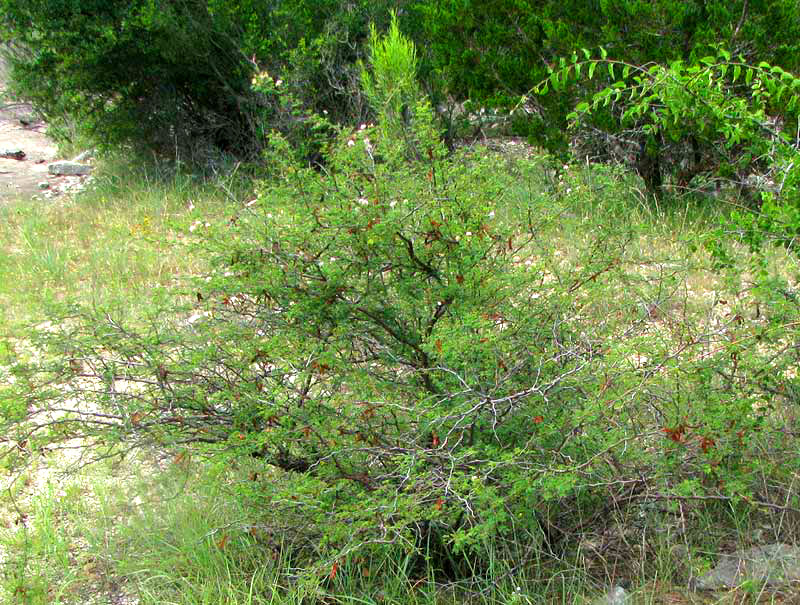
from the July 7, 2013 Newsletter issued from the Frio Canyon Nature Education Center in the valley of the Dry Frio River in northern Uvalde County, southwestern Texas, on the southern border of the Edwards Plateau; elevation ~1750m (~5750 ft); N29.62°, W99.86°; USA
TEXAS MIMOSA
Just a couple of miles south of here and lower on the Edwards Plateau slope certain scrubby, usually spiny, acacia-like bushes appear that are typical of the hotter, drier scrubland farther south and west but rare or absent around the Center. One such spreading, much-branched, shoulder-high shrub that nowadays is both flowering and fruiting is shown along the road above.
A ¾-inch broad (2cm) flowering head among the bush's ferny, twice-compound leaves appears below:
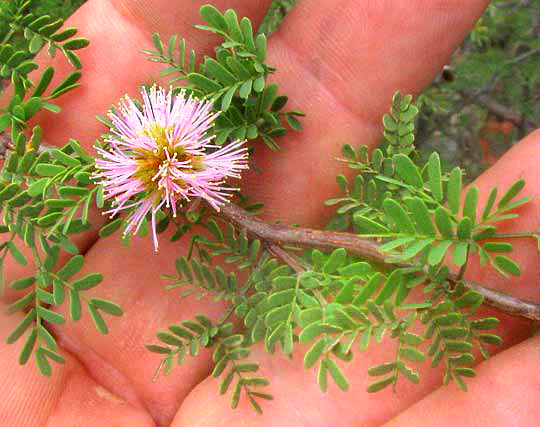
That flower head consists of numerous blossoms attached to the tip of a stem-like peduncle. The numerous slender items radiating outward are stamen filaments topped by tiny, spherical, pollen-producing anthers. This is a typical flowering head of a certain group of Bean Family members, the group including such well-known plants as the acacias and mimosas that are so typical of the arid American tropics and subtropics. Since the bush is a member of the Bean Family, it bears legume-type fruits. Legumes on this bush are very distinctive, as shown below:
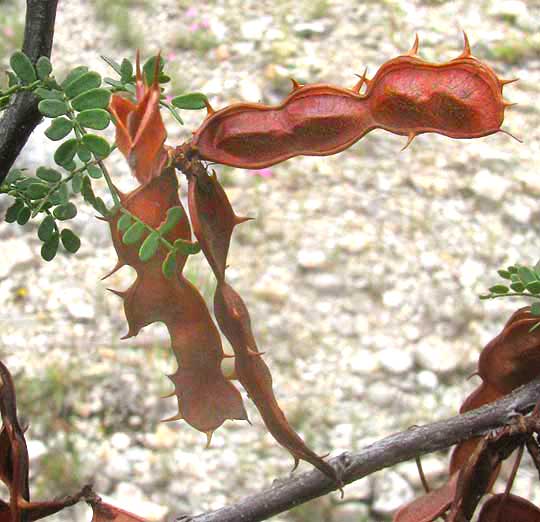
Upon first seeing this bush I thought we'd already profiled it, in our recent April 21 Newsletter, identifying it as the Pink Mimosa, Mimosa borealis. However, when I double checked the matter, this week's roadside bush turned out to be something else. It's a mimosa, but it's the Texas Mimosa, MIMOSA TEXANA, endemic just to southwestern Texas and adjacent arid, upland Mexico.
To see why it might be so easy to confuse the two species, you might like to compare the above pictures with those of last April's Pink Mimosa at http://www.backyardnature.net/n/w/mimosa-b.htm.
I was helped in distinguishing the two very similar, closely related species by a webpage produced by the University of Texas dedicated entirely to telling the two species apart. That page is at http://www.biosci.utexas.edu/prc/digflora/mimosa/mimosa-dif.html.
Among other features, that page points out that flower corollas of last April's Pink Mimosa produce petals separate from one another all the way to their bases. You can see this in our flower picture of that species at http://www.backyardnature.net/n/13/130421mn.jpg.
Below you can compare those corollas with those of this week's Texas Mimosa, which join at their bases to form a short tube:
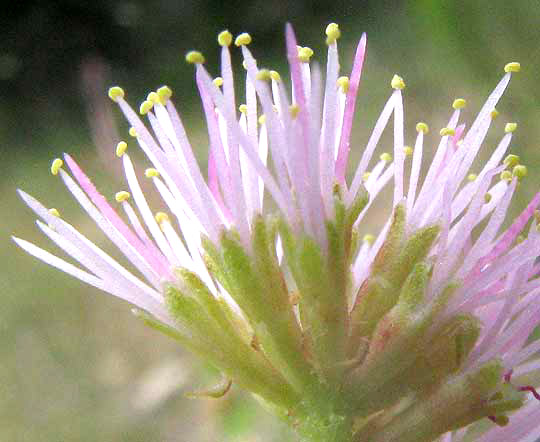
Also, the legumes of Pink Mimosas arise on relatively long, slender stems, or "stipes," while the bases of legumes of Texas Mimosas are short and thick, as shown below:
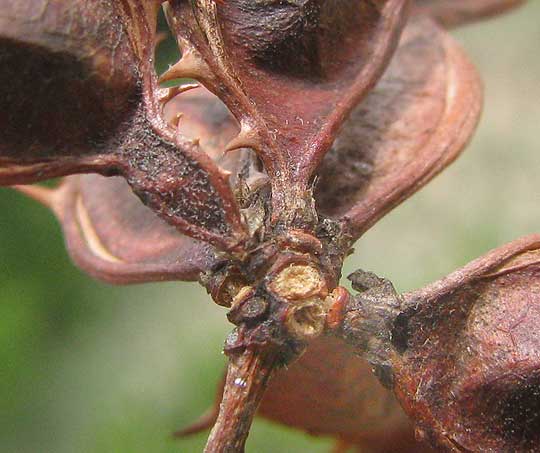
So, this was a fine find, a shrub with fragrant, pretty blossoms, of very limited distribution, and hard to notice unless you're paying attention to such details as how much the petals are attached at their bases.